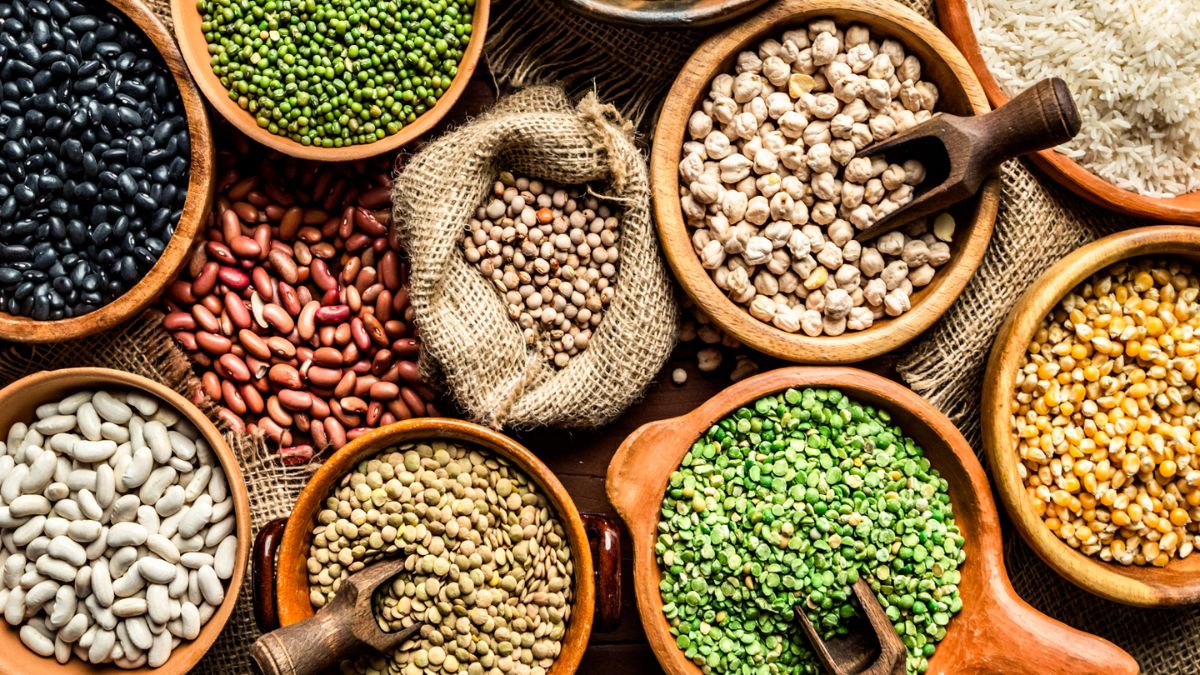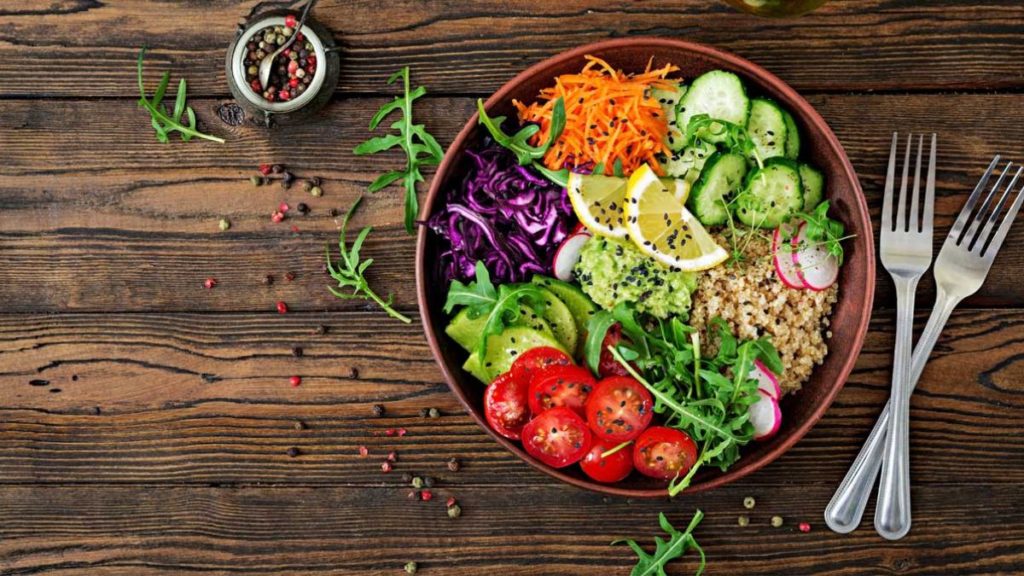It’s hard to get too much protein, so vegetarians and vegans usually don’t have to worry about this. However, it’s still good to know your best protein sources. Research shows that this may be a more important question for vegetarians and vegans who want to stay healthy. For example, spinach has a lot of iron, but the body can’t use it as well as it can use iron from meat. From a purely culinary point of view, high-protein plant foods can also fill the texture and flavor gaps that meat and animal products often leave. Eating any of these foods, you will learn more and enjoy your food more.
What is a Vegetarian Diet?
The 2020-2025 Dietary Guidelines for Americans list a vegetarian diet as one of three healthy ways to eat. Vegetarianism has been around for a long time in many different cultures worldwide. Written references to vegetarianism can be found in Europe as early as the sixth century AD. A vegetarian diet is based on not eating meat, poultry, or fish. Meat, poultry, and seafood are not part of a vegetarian diet. It is a meal plan made up of mostly plant-based foods. Among these are vegetables. Fruits.
Types of Vegetarian Diets
Here are some varieties of a vegetarian diet, including:
- The lacto-ovo-vegetarian diet doesn’t include meat, fish, or poultry, but eggs and dairy.
- The Lacto-vegetarian diet doesn’t include meat, fish, chicken, or eggs but dairy products.
- The ovo-vegetarian diet doesn’t include meat, fish, poultry, or dairy but eggs.
- The pescatarian diet doesn’t include meat or poultry, but fish and sometimes eggs and dairy.
- The vegan diet does not include meat, fish, poultry, eggs, or dairy products; it also does not include honey, which comes from bees.
Some diets are not vegetarian but have some of the same ideas. One example is the flexitarian diet, a flexible way of eating that focuses on adding plant-based foods and drinks, allows dairy and eggs, and suggests eating meat less often or in smaller amounts.
Protein on a Vegetarian Diet
Here Are the Lists of Proteins on a Vegetarian Diet
1. Beans and Legumes
We can’t talk about vegetarian and vegan diets without talking about beans and other legumes. Not only are they great sources of protein, but they are also very healthy. You might not like them in general, but we think that’s because you haven’t found the right kind. Indian, Mediterranean, and Middle Eastern cooking use many beans and other legumes.
2. Seeds
The seed is the young version of the plant it comes from. As you might expect, there are a lot of different kinds of seeds, and almost all of them are good sources of protein and other nutrients. Hemp, pumpkin, chia, sesame, and flaxseed are some of the seeds with the most protein. You can put any of these seeds in overnight oats or muesli bars, or you can make chia fresca, a drink from Mexico that is both refreshing and healthy.
3. Nutritional Yeast
Nutritional yeast has a cheesy, nutty taste and has all nine essential amino acids. Since nutritional yeast is a powder, it works best when added to dishes that call for grated or sprinkled cheese. You can use it to make this vegan pesto, vegan lentil meatballs, or tasty popcorn seasoning.
4. Nuts
Many nuts have a lot of protein, but they also tend to have a lot of fat, so it’s best to stick to a 1-ounce serving size. Along with almonds, walnuts, cashews, and pistachios, peanuts are one of the best nuts for getting protein. Also, nuts can be turned into many different foods, so you can get creative with how you use them in your diet. Make home cashew milk, biscuits with almond flour, or peanut butter.
5. Tempeh, Tofu, and TVP
Soy is not a new food for vegetarians or vegans, but it is a good friend. Tempeh is a cake made from whole soybeans and sometimes seeds that have been left to ferment. Since it has been fermented, tempeh is good for people who have trouble digesting soy products. Try putting crumbled tempeh in a vegan chili or a potato hash for breakfast. You can usually find firm, soft, and silky tofu. If you go to an Asian specialty store, you’ll find even more kinds. You can use firm tofu for this marinated recipe or silken tofu to make a vegan chocolate pie. TVP is made from soy flour and means “textured vegetable protein.” It feels like ground meat and has a neutral flavor, so it can be changed to suit many tastes. Shepherd’s pie is a warm and comforting vegan meal, and this meatless meatloaf is another tasty way to use TVP.
6. Grains
Even though grains have more carbs than proteins, they can also help us get more protein on our plates. The most protein-rich grains in this category are Kamut, spelled, teff, amaranth, and quinoa. However, oats, whole-wheat pasta, and brown rice are also great choices. Even though grain bowls and oatmeal are good go-to, you can get creative if you want to. For example, injera is an Ethiopian flatbread made with teff flour and sourdough. It is usually served with almost all of their dishes. Koko is also from Africa. The Hausa people came up with it. Millet that has been fermented and spiced is used to make Koko, which is then heated and eaten as a simple porridge or with fried bean cakes called to choose.
7. Natto and Edamame
Even though there are a lot of soy foods, natto and edamame deserve their explanations because of how they are made and eaten. Natto is whole soybeans that have been fermented. It comes from Japan. Because natto is fermented, it is easy for the body to take in protein and nutrients. It also has a slimy texture that makes it hard for some people to like. Try it in natto and white rice, a traditional Japanese dish. Edamame is just the pods of the soy plant that have been steamed or pan-fried. They can be eaten plain, salted, or with other ingredients. Try our recipe for angry edamame if this sounds good.
8. Seitan
Seitan is made from wheat gluten, so don’t eat it if you’re allergic to gluten. Seitan is a great high-protein food for vegetarians and vegans who can handle gluten well. It has a bland taste and chewy texture, but when used in recipes, it takes on the flavor of the other ingredients. You could try making seitan from scratch or making vegetarian hot wings.
9. Protein Powder
Protein powders are a great choice if you want a quick and easy way to get protein from plants. Whether it comes from hemp, pea, whey, soy, or a mix of plant sources, many options vary in price, nutrition, easy digest, and taste. You can add a scoop of protein powder to a cacao almond bliss smoothie, these light and fluffy pancakes, or vegan cashew yogurt.
How to Make Easy Vegan Nutritional Yeast Pasta?
This vegan nutritional yeast pasta recipe is easy and quick to make. It’s also vegetarian and vegan, and it tastes good, but it’s not fancy at all. Even though it’s not quite the same, this is the quick and easy vegan way to satisfy a craving for mac and cheese. This is a simple recipe for pasta in a white sauce, or roux, made with soy milk, flour, and oil. The nutritional yeast gives the dish a cheesy flavor.
If you try this nutritional yeast pasta recipe and feel like something is still missing, add a bit of garlic powder, onion powder, or extra salt. Or, add some frozen peas, fresh broccoli, a handful of spinach, or chopped tomatoes to make it more interesting. If you don’t mind the fat, add a tablespoon of vegan margarine or cheese to make the sauce thicker and creamier.
Ingredients
A protein is a natural, complicated substance composed of amino acid residues linked together by peptide bonds. Proteins are found in all living things. Enzymes, hormones, antibodies, and other important biological compounds are all made of proteins. Protein is a necessary part of the diet and is needed for normal cell structure and function. Protein is also an important part of the processes that give you energy and help your blood carry oxygen all over your body. It also helps cells stay healthy, make new ones, and make antibodies that fight off infections and diseases.


